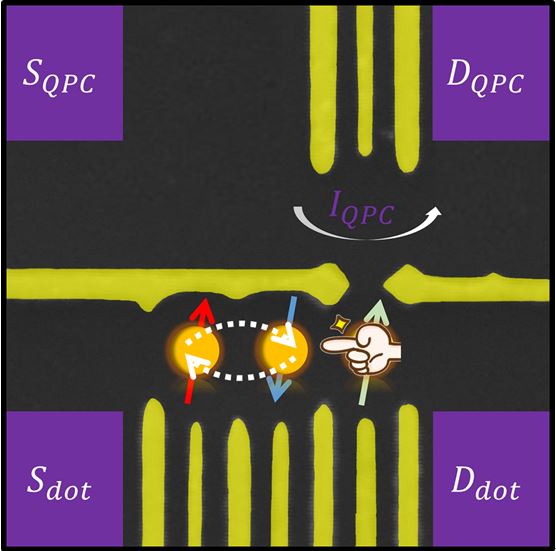New progress in semiconductor quantum dot hybrid qubit has been achieved by Key Laboratory of Quantum Information and Synergetic Innovation Center of Quantum Information & Quantum Physics of USTC. The jointed group of Prof. GUO Guoping and researchers from UCLA and University at Buffalo experimentally demonstrated quantum coherent dynamics of a tunable triple-dot-based hybrid qubit. The results were published on 29 December titled “Tunable Hybrid Qubit in a Triple Quantum Dot” (Physical Review Applied 8, 064035 (2017)).
Developing the scalable semiconductor quantum chip that is compatible with modern semiconductor-techniques is an important research field. However, in solid-state system, there are various dephasing mechanisms such as charge noise and nuclear spin. It is highly desired to get an encoding method that can both be fast manipulated and have long coherence. Hybrid qubit is one of the proposals to address this issue. In the early experiments, using the anharmonicity of quantum dot, Prof. Guo’s group had experimentally demonstrated a hybrid qubit with fast operation and long coherence time in a GaAs double quantum dot in 2016 (Phys. Rev. Lett. 116, 086801 (2016)).
To further improve the tunability of hybrid qubit, the researchers took the advantage of asymmetry and extended the double quantum dot to a linearly coupled triple quantum dot device, and realized a controllable hybrid qubit with asymmetric tunnel couplings in the multi-electron region. The triple dot system could be conveniently initialized, controlled, measured electrically, and had good ratio Q ~ 29 between the coherence time and gate time. More importantly, the qubit can be evaluated between the left and middle dot by conveniently tuning the gate voltage of right dot from 2 to 15 GHz, while its energy splitting could be continuously adjusted in a wide range.

Schematic diagram of the trible quantum dot structure: the left two quantum dots (red and blue arrows) constitute a hybrid qubit, the right quantum dots (green arrow) adjusts the energy level interval of the hybrid qubit(Image)
Improving the tunability of electron energy levels in semiconductor quantum dot system is vital for potential use in future quantum control. According to the reviewer, “this experiment marks a great advance in the field of quantum-dot-spin based quantum computation”, providing insights for the multi-electron quantum-dot devices, including a new encoding scheme that can be exploited on the triplet dot structure.
This work was supported by the Ministry of Science, the National Natural Science Foundation of China, Chinese Academy of Sciences and the Ministry of Education.
Contact:
Prof. GUO Guangcan,Key Laboratory of Quantum Information and Synergetic Innovation Center of Quantum Information & Quantum Physics of USTC
E-mail:gcguo@ustc.edu.cn
Edit by GUO Jianjian